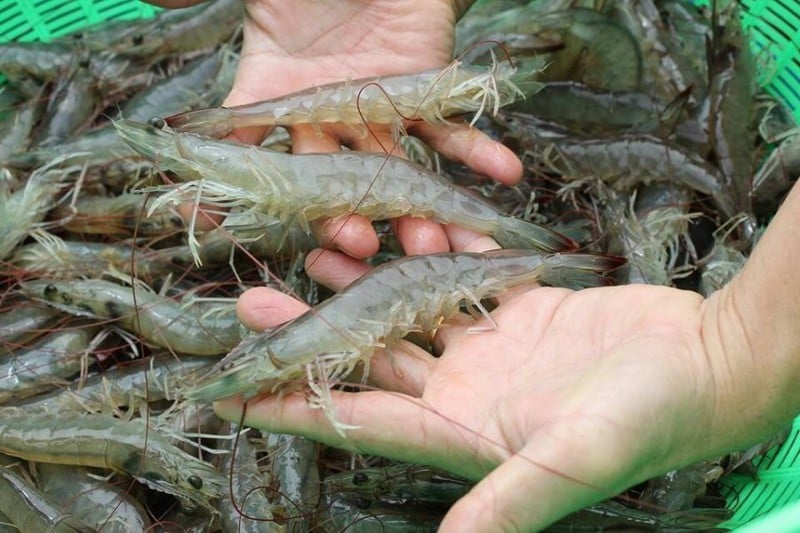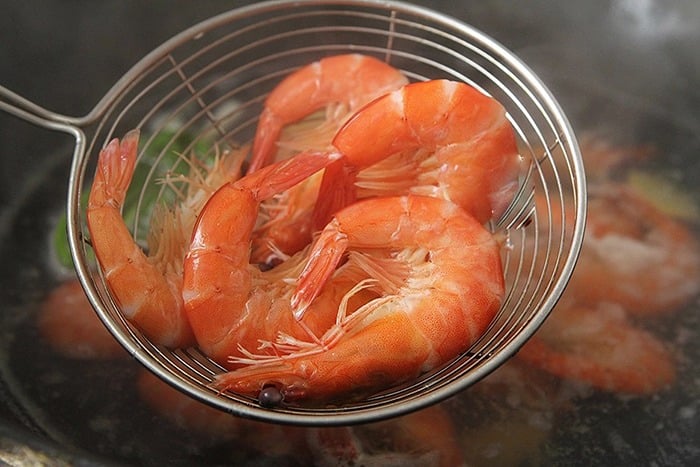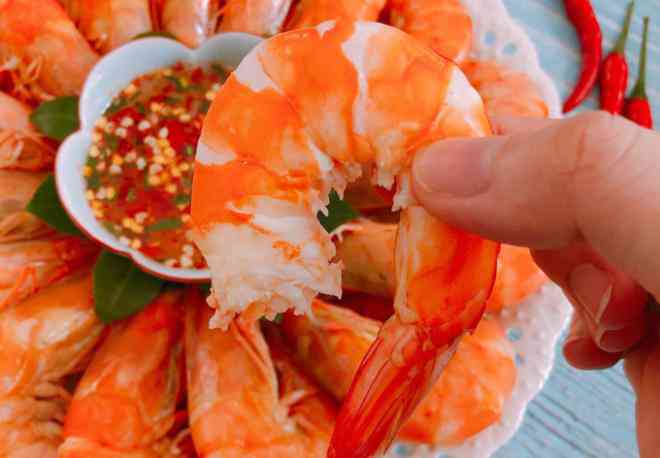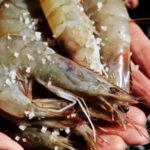How to choose fresh and safe shrimp without chemical injection
Observe the shrimp’s legs
Fresh shrimp usually have transparent legs that are tightly attached to the body. If the legs are blackish and loose, it indicates that the shrimp is spoiled.
Observe the shrimp’s body and head
Fresh and chemical-free shrimp have slightly curved and firm bodies, but not unusually plump. The shell joints on the shrimp body are flexible and not loose. The shrimp’s head and body are closely attached, and the head does not detach from the body.
Avoid buying abnormally plump and stretched-out shrimp.

Observe the shrimp’s tail
Fresh shrimp usually have neatly arranged tails. If the tails are spread apart, it means the shrimp has been injected with chemicals or injected with water to make it plumper.
Observe the shrimp’s shell
The shell of fresh shrimp is hard, transparent, and closely attached to the shrimp meat.
Different types of shrimp have characteristic shell colors, such as the green shell with brown or black patterns of lobster shrimp, the brown shell of iron shrimp, the red legs of shrimp, the emerald green shell of tiger shrimp, the transparent pink shell of transparent shrimp, the red legs…
Avoid choosing shrimp with sticky or rough shells, abnormal colors, or yellowish or cloudy appearance, as they are spoiled or contaminated with chemicals.
Note: To avoid buying spoiled or chemically contaminated shrimp, you should buy live shrimp with a stale smell or if buying frozen shrimp, buy from reputable and quality-assured supermarkets or establishments.
Tips for boiling shrimp like in restaurants
The most accurate way to boil shrimp
Ingredients: Shrimp, ginger, scallions, salt, cooking wine
Instructions:
– Buy one kilogram of fresh shrimp, after purchasing, pour them into a basin, let them sit for a while, and then feed them. Next, use scissors to cut off the shrimp’s whiskers and rinse them thoroughly.

– Rinse the shrimp thoroughly before putting them into the pot to boil. Many people also meticulously remove the shrimp’s whiskers because they believe it helps get rid of the odd taste.

But for boiled shrimp, I recommend not removing the shrimp’s whiskers. Removing the shrimp’s shell before boiling will make the shrimp lose its sweet taste during the cooking process.
– After preparing the shrimp, set them aside for later use. We prepare a pot and fill it with water. Then, you need to prepare some chopped scallions and ginger, and add them to the pot. Let it boil until the water in the pot is boiling.

– After boiling for a while and it’s not yet fully cooked, continue boiling for about 1 minute until the water releases the aroma of scallions and ginger, then turn off the heat.
– At this point, you can add the shrimp and pour a suitable amount of cooking wine to eliminate the fishy smell. You can also add a little salt for taste, then continue boiling over high heat.

– Shrimp cooks quickly, about an additional 1 minute when you see the shrimp turn red, it means they are cooked. At this point, you can scoop them out and enjoy. If you feel 1 minute is not enough, you can boil for 2 minutes, but do not boil for too long, as it will make the shrimp less fresh and tasty.
Tips when boiling shrimp
Boiling shrimp, cold or hot water? The correct method is to boil them in hot water, add scallions and ginger to the boiling water before adding the shrimp to boil.
Shrimp cooked this way will have fresh, tender meat, delicious flavor, no fishy smell, and especially aromatic.

Notes when eating shrimp
Shrimp is nutritious for the body, but don’t eat too much. Adults should not exceed 100 grams per day, and children should not exceed 50 grams. Because shrimp is seafood, it is best to steam or boil it to minimize the number of insects and parasites that can cause food poisoning.
New mothers may also have difficulty digesting shrimp and are prone to forming raised scars, so it is also advisable to limit their shrimp consumption.
Do not eat shrimp together with vegetables, stems, or fruits that are rich in vitamin C because when vitamin C encounters shrimp toxins, it will release toxins and cause food poisoning.
People with red eyes and those with asthma or a cough should not eat shrimp as they can cause allergies and worsen the condition. If you are allergic to shrimp, never eat even a small amount.
How to Choose Fresh Seafood: Important Cabinet Tips
In recent years, concerns have been raised over the practice of injecting urea and chemicals into seafood, making it difficult to find safe and fresh options. To help, DienmayXANH.com offers some tips on how to select the best seafood available. Seafood is a rich, delicious, and nutritious source of food, and this advice will help ensure you make the most of it.



































